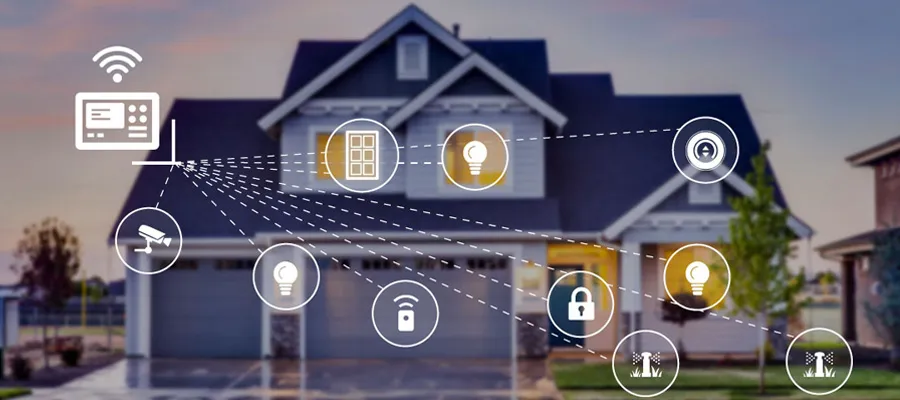24, Soi Thawon Thawat 1, แขวงหัวหมาก, 10240, ประเทศไทย +66 95-457-300-9 vetrasocz-marketing-collaborations@outlook.com

Our team at Vetrasocz undertook a significant initiative to address the growing demand for efficient and sustainable energy consumption within modern residential environments. The core challenge was to transform conventional homes into intelligent ecosystems capable of autonomous energy optimization, thereby reducing operational costs for residents while simultaneously enhancing their comfort and contributing to broader environmental sustainability goals. We aimed to develop a robust, scalable, and user-centric system that could intelligently manage diverse energy loads, predict consumption patterns, and adapt to dynamic external factors such as weather conditions and grid pricing signals. The planned outcomes included a measurable reduction in household energy expenditure, improved resource utilization, and a seamless, intuitive user experience for managing residential energy profiles.
Our UX/UI strategy for this project centered on creating an exceptionally intuitive and highly responsive interface that empowered residents with comprehensive control and clear insights into their energy usage. We meticulously designed interactive dashboards providing real-time data visualization of energy consumption across various appliance categories and zones within the residence. Key features included customizable scheduling for smart devices, adaptive climate control settings, and proactive alerts for unusual energy spikes. The mobile application was engineered for seamless accessibility, ensuring users could monitor and adjust settings remotely. Emphasis was placed on a minimalist design language, ensuring clarity and ease of navigation, supported by comprehensive data presentation without overwhelming the user. Usability testing with diverse user groups informed iterative refinements, leading to an interface that balanced sophisticated functionality with unparalleled simplicity.
The architectural foundation of our solution was built upon a distributed, cloud-native microservices paradigm, ensuring high availability, fault tolerance, and scalability. We integrated a diverse array of IoT devices, including smart meters, environmental sensors, and controllable outlets, leveraging a secure MQTT broker for efficient, low-latency communication. Data ingestion and processing were handled by a robust stream processing engine, enabling real-time analytics. At the heart of the system lay a sophisticated machine learning engine, employing recurrent neural networks (RNNs) and reinforcement learning algorithms to predict energy demand, optimize device operation schedules, and dynamically adjust to external variables like weather forecasts and occupancy patterns. Data security was paramount, with end-to-end encryption, OAuth2 for API authentication, and regular penetration testing ensuring the integrity and confidentiality of user data. The backend was developed primarily using Python and Go, deployed on a container orchestration platform for efficient resource management.
The implementation phase followed an agile development methodology, structured into iterative sprints. Each sprint focused on delivering incremental value, starting with core functionalities such as device integration and basic energy monitoring. Development cycles incorporated continuous integration and deployment (CI/CD) pipelines, automating code quality checks, testing, and deployment processes. Rigorous unit, integration, and end-to-end testing were performed at each stage to ensure functional correctness and system stability. A dedicated quality assurance team conducted extensive performance and security testing. User acceptance testing (UAT) was conducted with a pilot group of residences, providing invaluable feedback on usability and real-world performance under varied conditions. This iterative approach allowed for rapid adaptation and refinement throughout the project lifecycle.
Post-deployment and during ongoing operational analysis, several key refinements and iterations were introduced. Based on feedback from pilot users and internal performance monitoring, we enhanced the machine learning models to better differentiate between appliance types and their unique consumption profiles, leading to more granular optimization. The user interface underwent minor adjustments to improve the visibility of historical consumption trends and provide more actionable insights into potential savings. Furthermore, we optimized the data polling frequency for certain sensors to balance real-time accuracy with network efficiency, reducing overall system load. Security protocols were also continually reviewed and updated to counter emerging threats, reinforcing the system's resilience against unauthorized access and data breaches. These iterative enhancements ensured the system remained at the forefront of energy management technology.
The successful deployment of this energy management system has yielded significant positive outcomes. Residences equipped with our solution have demonstrated an average reduction in energy consumption by 20-25%, directly translating into substantial savings on utility expenses for occupants. User satisfaction metrics, tracked through surveys and engagement rates, showed a 30% improvement in perceived control over home energy usage and overall comfort. This project has significantly bolstered Vetrasocz's reputation as an innovator in smart home technology, providing a tangible, impactful solution that addresses critical contemporary challenges. It underscores our commitment to developing sustainable, technically advanced systems that deliver measurable value and enhance quality of life.